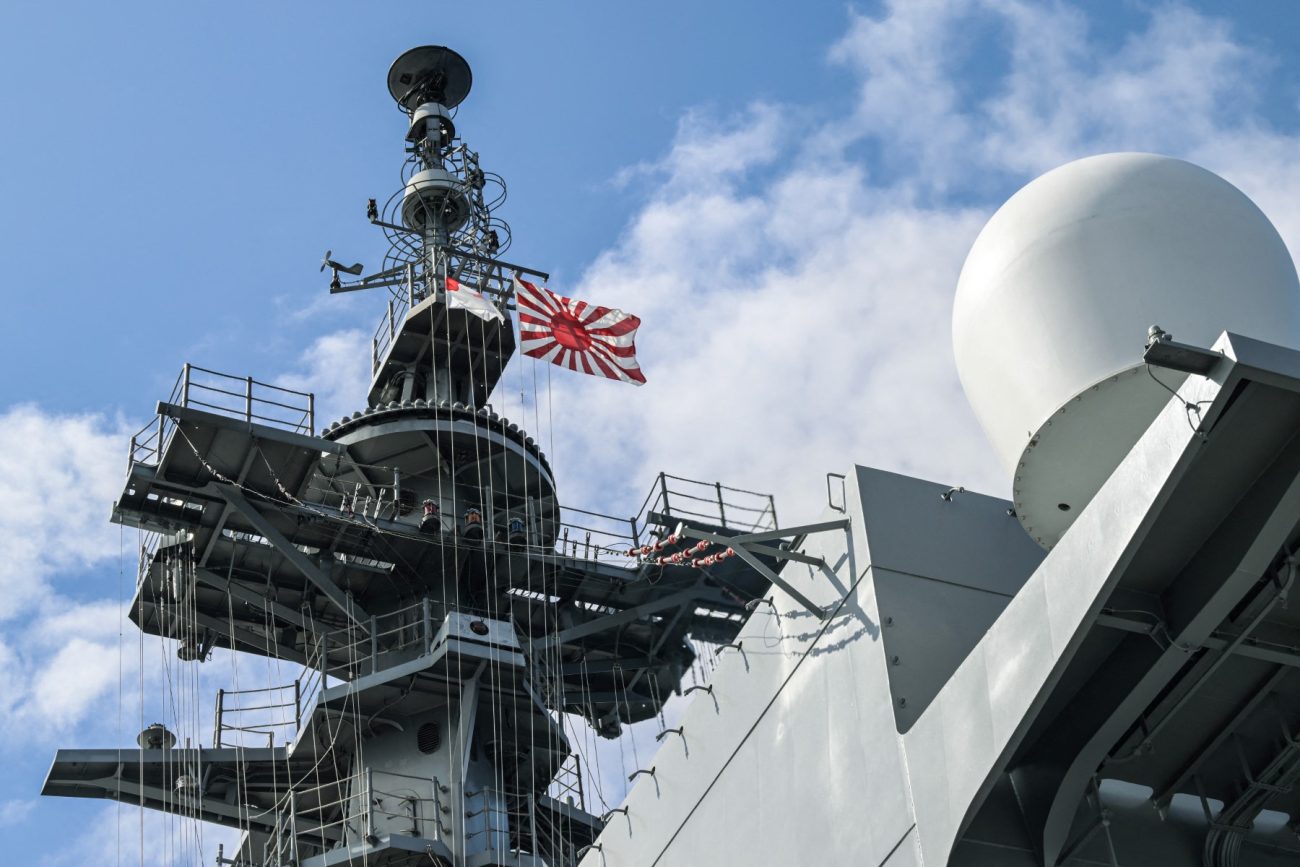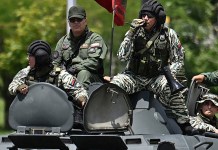Pacific military balance is tilting in China’s favour, says the new “Defence of Japan 2025,” White Paper, a Defence Ministry annual document. Tokyo released the paper in early July with findings that the international community is facing its greatest risk of conflict since World War II.
The paper identified Russia, China, and North Korea as the primary regional security threats. The report also found that the US-China strategic competition has escalated, and that the military balance between China and Taiwan has been rapidly tilting in China’s favour.
Defence Of Japan 2025 White Paper
China’s external posture, as well as its military and other activities, pose a serious concern for Japan and represent the greatest strategic challenge, according to the document.
China’s activities in the East and South China Seas have intensified, particularly around Taiwan. China is building military strength, particularly in air, maritime, and amphibious capabilities, in pursuit of unifying Taiwan. They could attempt a blockade of Taiwan.
The presence of Chinese warships in the Pacific has steadily increased, and the frequency of their passage off south-western Japan has tripled in the past three years, including in waters between Taiwan and the neighbouring Japanese island of Yonaguni, the report said.
Russia and China’s militaries are conducting joint training exercises. It includes joint bomber flight operations and coordinated naval patrols, including in the vicinity of Japan.
These joint activities are seen as an intimidating show of force against Japan, the paper says. The paper also condemns Russia’s invasion of Ukraine and the ongoing war, and calls it an attempt at unilateral changes to the status quo by force. A similar situation may occur in the East Asia region in the near future.
North Korea’s nuclear and missile developments were also highlighted as a grave threat to Japan. North Korea is focusing on qualitative improvements in its nuclear and missile capabilities.
Given the political, economic, and military competition between the US and China, the importance of the US–Japan alliance was underscored as crucial for joint deterrence. The report highlights ongoing initiatives and efforts to enhance the capabilities of the Japanese Self-Defence Force (JSDF).
China’s Foreign Ministry spokesperson Lin Jian criticized the white paper, saying it “adopts a wrongful perception of China, unjustifiably interferes in China’s internal affairs, and plays up the so-called China threat.”
Beijing has lodged protests with Japan, Lin said, defending China’s military activities as “legitimate and reasonable.” He urged Japan to reflect on its wartime past and “stop hyping tension in the region and China-related issues as a pretext to justify its military build-up.”
China-Japan Security Dynamics
The security dynamics between China and Japan are complex, marked by both cooperation and competition, particularly in the context of a shifting regional power balance.
China’s rise as a regional power and its military modernization have heightened Japan’s security concerns. Japan, in turn, is strengthening its defence capabilities, deepening its alliance with the United States, and forging closer ties with other regional partners to counter potential threats.
The Senkaku/Diaoyu Islands dispute remains a major source of friction, highlighting the lack of trust between the two nations.
Japan has responded by increasing its defence spending and modernizing its military. Despite security concerns, the two countries maintain strong economic relationships. Japan’s alliance with the United States is a cornerstone of its security policy, providing a strong deterrent against potential threats.
Both China and Japan have a vested interest in maintaining peace and stability in the region, although their approaches to achieving this goal may differ.
There have been cases when Chinese warplanes briefly violated Japanese airspace off islands near Nagasaki, and an aircraft carrier’s entry into a zone just outside of Japan’s territorial waters southwest of the Nansei island chain, which stretches from the southern coast of Kyushu to Taiwan.
More recently, a Chinese JH-7 fighter-bomber flew close to a Japanese YS-11EB electronic-intelligence aircraft. Japan raised a protest. Beijing, in turn, accused Japan of flying near Chinese airspace for spying purposes.
New National Security Strategy (NSS)
On December 16, 2022, Japan announced its new National Security Strategy (NSS), which outlined a shift towards a more proactive and robust defence posture.
Article 9 of the Japanese Constitution was a clause that renounced war as a sovereign right and permitted only self-defence forces. For a long time, Japan had a self-imposed limit on its defence budget, at no more than 1 percent of the country’s GDP.
The NSS, which came into effect after Russia’s conflict in Ukraine, commits to increasing Japan’s defence budget to 2 percent of its GDP by 2027, a significant jump from the earlier limit.
It now calls for the development of capabilities to launch counterstrikes against potential adversaries and to disrupt invasions earlier and at greater distances. The strategy emphasizes the use of all instruments of national power — diplomatic, informational, military, and economic — to achieve Japan’s security objectives.
Japan is prioritizing strengthening its alliance with the United States and building a network of security cooperation with other countries, like the EU. The strategy also focuses on strengthening Japan’s domestic defense industry and developing capabilities such as long-range precision cruise missiles and active cyber defense.
Defence Budget 2025 & Acquisition Priorities
Decades of compulsive dependence on the United States has left Japan’s military an underdeveloped force. Tokyo’s military posture vis-à-vis regional threats remains a work in progress.
With President Donald Trump focusing on strengthening the US economy and security, Japan and other US allies face expectations to play a greater role in maintaining peace and stability in the region.
North Korea poses “an increasingly serious and imminent threat” to Japan’s security. Japan has accelerated its military build-up on the southwestern islands in recent years, preparing to deploy long-distance cruise missiles, as it worries about a conflict in Taiwan. Japan recently tested a short-range, surface-to-ship missile.
For 2025, Japan approved a record defense budget, marking the 13th consecutive year of growth. It is up 9.4 percent to a record 8.7 trillion yen ($55.1 billion).
Among the priorities are new communications satellites, stand-off weapons such as ground- and sea-launched Type 12 anti-ship missiles, hyper-velocity gliding projectiles for island defence, and development of submarine-launched missiles.
Funds would be required for Kongsberg’s Joint Strike Missile for Japan’s F-35A fighters, Tomahawk cruise missiles to arm destroyers, and extended-range Joint Air-to-Surface Stand-off Missiles (JASSM-ER) for F-15 fighters. Also on the list are two MQ-9B SeaGuardian drones and six American V-BAT drones, which are intended to operate from Japanese warships. Integrated air and missile defence is a priority, and so are mobile reconnaissance radars.

Japan’s Self-Defence Forces (JSDF) Renewed Approach
Since North Korea acquired ballistic missile capability in 1998, Japan has participated in the American anti-ballistic missile (ABM) defence program, through joint research and development of the Aegis Ballistic Missile Defence System, and have physically deployed three types of ABM system, air defence vehicles, sea-based Aegis and land-based PAC-3 ABM, and the upgraded version of the MIM-104 Patriot.
In 2018, Japan selected Lockheed Martin Corp. to build a $1.2 billion radar for two ground-based Aegis ballistic missile defense stations.
In light of tensions over the Senkaku Islands, Japan began to assemble the Amphibious Rapid Deployment Brigade in 2016, its first marine unit since World War II, designed to conduct amphibious operations and to recover any Japanese islands taken by an adversary.
Japan has also initiated a program to convert its Izumo-class destroyer two-ship fleet from “helicopter carrier destroyers” to aircraft carriers with the capability to launch the F-35B, marking the first time Japan has had aircraft carriers since World War II.
In 2014, Prime Minister Shinzo Abe’s government lifted the long-standing ban on Japanese troops engaging abroad, a prohibition dating back to the end of World War II, to strengthen Japan’s position.
Japan Air Self-Defence Force (JASDF)
JASDF is the air and space branch of the JSDF. Major organs of the JASDF are the Air Defence Command, Air Support Command, Air Training Command, Air Development and Test Command, Air Materiel Command, and the Space Operation Squadron.
The Air Defence Command is further divided into northern, central, western, and south-western regions, as well as the Composite Air Division. JASDF controls surface-to-air missile units of both the JASDF and the JGSDF (Ground Force).
The nearly 50,000-strong JASDF has around 750 aircraft (320 fighters). Its main roles are aerial, space, cyber, and electronic warfare. The JASDF conducts combat air patrols around Japan, while also maintaining a network of ground and air early warning radar systems. The service will be renamed in 2027 to the Japan Air Self-Defence Force (JASDF).
Its current fighters include Boeing F-15J/DJ, Mitsubishi F-2A/B, and F-35A/B. E-767 AWACS and E-2C/D Hawkeye are the AEW&C (Airborne Early Warning and Control) aircraft.
Transport aircraft include the Kawasaki C-1 and C-2, the Lockheed C-130H, the Hawker 800, the Gulfstream IV, and the Boeing 777. The electronic warfare aircraft include YS-11EA/EB and EC-1 (for EW training).
JASDF operates Sikorsky UH-60J and Boeing CH-47J (LR) Chinook helicopters. The Flight Refuelling Aircraft (FRA) are KC-767, KC-46 Pegasus, and KC-130. The JASDF has 22 AWACS and AEW&C aircraft, as well as 10 FRA. Japan also operates RQ-4 Global Hawk UAVs. Since March 2022, the Space Operations Group has been operating with two squadrons.
Japan is significantly bolstering its air power, particularly with the F-35 fighter jet, to counter the growing threat from China’s expanding air force. It is aware of the need to counter the Chinese H-6K bombers and J-20 stealth fighters, both within and beyond the First Island Chain (FIC).
Additionally, the growing presence of Chinese aircraft carriers has prompted Japan to modernize its air force and strengthen its alliances with QUAD countries, including the US, Australia, and India.
F-35s are replacing the retired Mitsubishi F-4EJ Phantom II for countering Chinese stealth capabilities. The JASDF is also upgrading its F-15J fighter jets to maintain air superiority.
The JASDF’s F-2 fighters are slated to be replaced by a future sixth-generation stealth fighter developed under the Global Combat Air Programme (GCAP). This aircraft would be designed by a joint venture set-up in mid-2025, with manufacturing and assembly being subcontracted to Britain’s BAE Systems, Italy’s Leonardo, and Japan’s Mitsubishi Heavy Industries.
The fighter is slated for deployment by 2035 and would be a crewed platform, potentially capable of directing other autonomous aircraft.
Japan has approved the modification of the Izumo-class ships to operate STOVL aircraft, such as the F-35. In the last few years, the JASDF has scrambled on average nearly 700 times a year to intercept China’s People’s Liberation Army Air Force (PLAAF) aircraft.
This has resulted in heavy wear and tear on their F-15J fighter aircraft. The F-35 fighter is now a supplement in such missions. JASDF will finally have around 100 F-35A/B fighters.
To Summarise
Japan must defend itself against the large PLA’s offensive capability. It is a tall order. China’s official defence budget for 2025 is close to US$277 billion.
The Japanese defence budgets have only started going up significantly very recently. It is already projected to reach 1.8 percent of GDP by 2025. Once it reaches 2 percent of GDP, it may exercise further flexibility to increase to 2.5 percent or even more.
China’s first priority is reclaiming/annexing Taiwan. Will China invade Taiwan and antagonise the entire world?
The US, Japan, and South Korea have significant military strength. Will the US enter conflict with China in case the PLA invades Taiwan? Whether Japan will enter such a conflict also remains a moot question. Notwithstanding, deterrence is important. The US will be able to provide satellite-based ISR, communications, navigation, and targeting.
United States Forces Japan consists of nearly 35,000 personnel. The US Air Force (USAF) maintains several key airbases in Japan, strategically positioned to support regional security and operations.
These include Yokota Air Base, Kadena Air Base, and Misawa Air Base, each playing a vital role in the US military’s presence in the Pacific.
USAF operates F-16 and F-15 fighters, KC-135 tankers, E-3 AWACS, and HH-60G helicopters. Other notable bases include Misawa Air Base, which is currently undergoing a transition from F-16s to F-35s. The F-22 also makes long operational deployments in Japan.
The US Air Force maintains a significant presence in South Korea, primarily through the Seventh Air Force, a component of Pacific Air Forces (PACAF). With the Philippines offering numerous airbases to the US, the USAF presence is expected to increase further.
The JASDF will need to focus on air defense against cruise and ballistic missiles, and enhance its capabilities and capacities. It would need fighter aircraft to defend against the Chinese next-generation fighters and bombers.
It would also need to build its long-term offensive weapon inventories to act as a deterrent. Japanese military asset commonality with NATO will help with early replenishments if required.
Japan’s two Izumo-class helicopter destroyers, the JS Izumo and JS Kaga, are undergoing conversion to light aircraft carriers to accommodate and operate F-35B. At least two more would be required later. Japan is on track to become an even more significant air and space power.
- Air Marshal Anil Chopra (Retired) is an Indian Air Force veteran, fighter test pilot, and ex-director-general of the Center for Air Power Studies in New Delhi. He has been decorated with gallantry and distinguished service medals during his 40-year tenure in the IAF.
- THIS IS AN OPTION ARTICLE. VIEWS PERSONAL OF THE AUTHOR
- He tweets @Chopsyturvey
- Follow EurAsian Times on Google News




